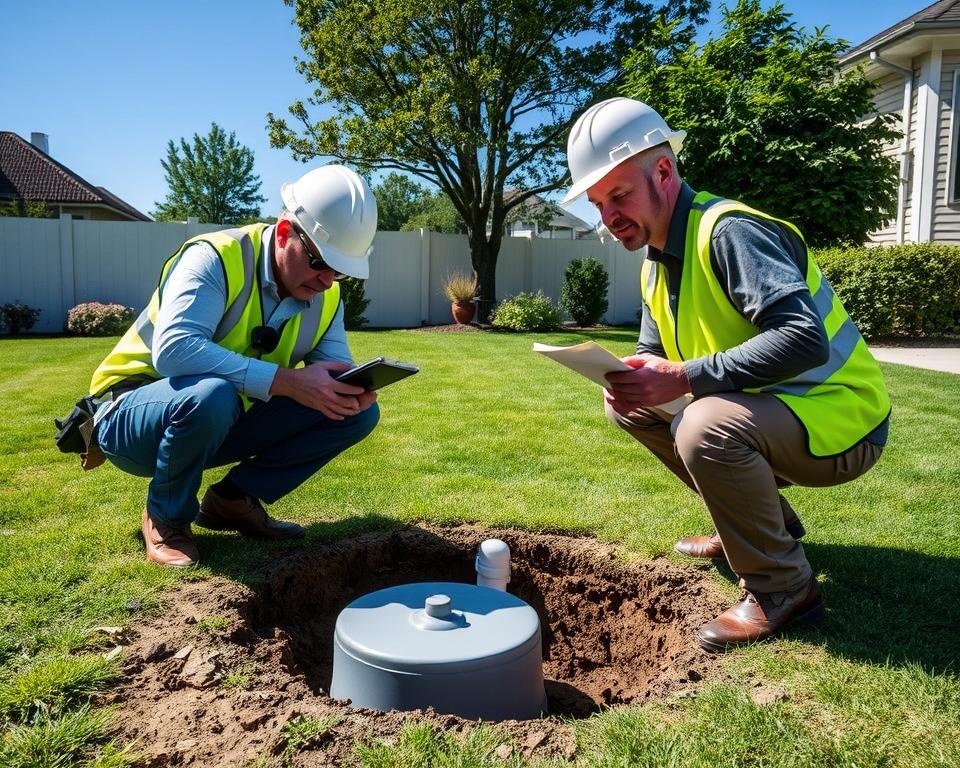Easy Septic Reservoir Maintenance: Keep Your System Healthy
Have you ever pondered why homeowners often overlook septic reservoir maintenance until it’s too late? Routine septic maintenance is crucial for a functional system and can avoid expensive fixes. Many homeowners are unaware to their septic tank’s placement or the necessary maintenance, resulting to costly problems and a system lifespan much less than anticipated. By investing in regular septic maintenance, which varies from $100 to $300 for pumping, you can guarantee your system operates efficiently and lengthens its lifespan.
Let’s examine the significance of comprehending your septic tank pumping service near me and the simple steps to maintain it effectively.
Understanding Your Septic System
Knowing your septic system is essential for effective wastewater management. It’s vital to understand the primary septic system parts, such as the septic tank and leach field. This understanding assists in maintaining the system’s functionality and avoids expensive repairs.
Components of a Septic System
The primary septic system components comprise:
-
Septic Tank: A underground, watertight unit that collects wastewater from the household. It permits solid waste to settle at the base.
-
Drain Field: A network of perforated pipes placed in gravel-filled trenches. This area treats wastewater as it percolates into the soil.
How Wastewater is Processed
When wastewater enters into the septic tank, the solids sink, creating a sludge layer, while grease rises to form a scum layer. This separation process usually lasts about a day for each batch of wastewater. The processed liquid effluent then moves to the drain field, where soil microorganisms carry on to clean it, ensuring safe distribution into the environment.
Significance of Regular Maintenance
Regular septic reservoir upkeep is essential for the lifespan and efficient operation of your septic system. Over time, without proper care, solids can build up, leading to blockages and potential system malfunction. Arranging a tank emptying every three to five years helps ensure a functional balance, allowing for effective wastewater disposal and preventing costly fixes down the line.
| Maintenance Activity | Regularity | Objective |
|---|---|---|
| Pumping the Septic Tank | Every 3 to 5 years | Remove accumulated sludge and scum |
| Checking System Components | Every year | Ensure all components are working properly |
| Upkeeping Leach Field | Regularly | Prevent blockages and permit proper effluent distribution |
Indications You Require Septic Tank Cleaning
Recognizing signs of septic failure is crucial for a functional septic system. Multiple symptoms indicate the requirement for prompt action, preventing sewage removal issues later. Early identification of these indications can prevent expensive repairs and unpleasant situations.
Typical Signs of a Malfunctioning Septic System
Watch for these signs that your septic tank might need maintenance:
- Slow-draining appliances throughout the home
- Foul odors near the septic reservoir or drain field
- Pools of water or very lush green grass over the drain field
- Backups in the plumbing or frequent blockages
Noticing any of these indications suggests your septic system might have sewage removal issues that need prompt action.
How Often Should You Arrange a Cleaning?
The requirement for septic tank maintenance differs with household size and water usage. Typically, cleaning is advised every three to five years. The number of people and daily water use significantly affects this septic reservoir cleaning frequency. For example, an average household uses about 70 gallons of water daily. Adhering to a routine maintenance plan helps prevent septic system problems and guarantees it works well over time.
Simple Septic Reservoir Maintenance Tips
Maintaining a septic tank doesn’t have to be overwhelming. Straightforward steps can ensure your system running efficiently. Employing natural methods ensures your septic reservoir remains in top shape and lowers harmful chemicals. Here are some effective pieces of advice to follow.
Using Natural Techniques for Upkeep
Natural methods can greatly extend your septic system’s life. A blend of baking soda, vinegar, and lemon juice is a great cleaner for plumbing without harming the beneficial bacteria. This approach breaks down grease and removes odors, keeping the bacteria healthy.
Do-It-Yourself Methods for Healthy Bacteria Levels
For ensuring optimal bacteria, consider DIY septic solutions. A combination of sugar, cornmeal, and dry yeast restores the vital bacteria. This blend feeds the microorganisms that break down waste, ensuring a healthy ecosystem for efficient treatment. Routine use of these natural substances prevents failures, ensuring your septic system running well for years.
| Do-It-Yourself Method | Ingredients | Benefits |
|---|---|---|
| Baking Soda Cleaner | Baking soda, vinegar, lemon juice | Eliminates grease and odors, preserves optimal bacteria levels |
| Bacteria Regenerator | Sugar, cornmeal, dry yeast | Nourishes bacteria, enhances waste decomposition |
Expert Septic Service Benefits
Spending in professional septic services provides homeowners substantial benefits. These services offer thorough care and peace of mind. Professionals guarantee your septic system functions at its best, reducing the risk of expensive repairs.
What to Expect from a Septic Maintenance Company
When you hire a reputable septic service company, anticipate a variety of tasks. These include:
- Thorough inspections of the septic reservoir and leach field.
- Professional cleaning and emptying to remove blockages.
- Identification of possible problems before they get worse.
- Recommendations on improving system longevity and efficiency.
Companies like Grease Trap Pumping Service concentrate on maintaining your system’s functionality through meticulous and regular assessments.
Cost of Professional Upkeep vs. Do-It-Yourself
The upfront cost of hiring professionals for septic reservoir maintenance may seem high. However, this spending can lead to significant benefits over time. The advantages of septic maintenance comprise:
- Lowered chance of emergency repairs, which can be expensive.
- Prolonged life of your septic system through continuous upkeep.
- Increased real estate value due to well-upkept systems.
While do-it-yourself maintenance may appear cost-effective at initially, it often misses the efficiency of professional care. Over time, the savings from reduced unforeseen problems support the expenses of professional septic upkeep.
Septic Pumping: When and Why
Comprehending the significance of septic emptying is crucial for maintaining your septic system functioning well. This procedure guarantees waste is properly disposed of and avoids expensive fixes due to system malfunctions.
Understanding the Pumping Procedure
The emptying procedure extracts solid waste, sludge, and scum from the septic tank. If these substances build up, they can clog the system, causing backups and health risks. Professionals employ a vacuum truck to extract them, guaranteeing your system functions effectively. Addressing problems quickly is crucial to avoiding further problems.
Regularity of Pumping for Optimal Functionality
Homeowners should plan to empty their septic systems every three to five years. This interval can change based on your household size and the tank’s capacity. Regular pumping keeps your septic reservoir in optimal shape, lowering the risk of clogs. Adhering to this maintenance schedule helps prevent costly repairs, ensuring your septic system running smoothly.
Protecting Your Leach Field
Guaranteeing the leach field’s condition is crucial for a septic system’s functionality. It’s the endpoint for treated wastewater, making its safeguarding crucial. Homeowners must carefully maintain their landscapes to avoid water runoff from affecting the leach field. This can lead to problems over time.
To safeguard the leach field, think about redirecting rain gutters and modifying the landscape to steer away of the region. This method can significantly lower the risk of water buildup, which could hinder soil’s ability to filter out pollutants. Additionally, it’s vital to keep trees at least 100 feet away from the septic system. This distance avoids root intrusion, protecting the leach field and avoiding expensive fixes.
Through careful septic system upkeep and strategic landscaping, homeowners can prolong their septic system’s life and reduce failures. Concentrating on drain field protection and smart leach field upkeep enhances septic performance. This method not only ensures a healthier system but also conserves time and resources in the long term.



